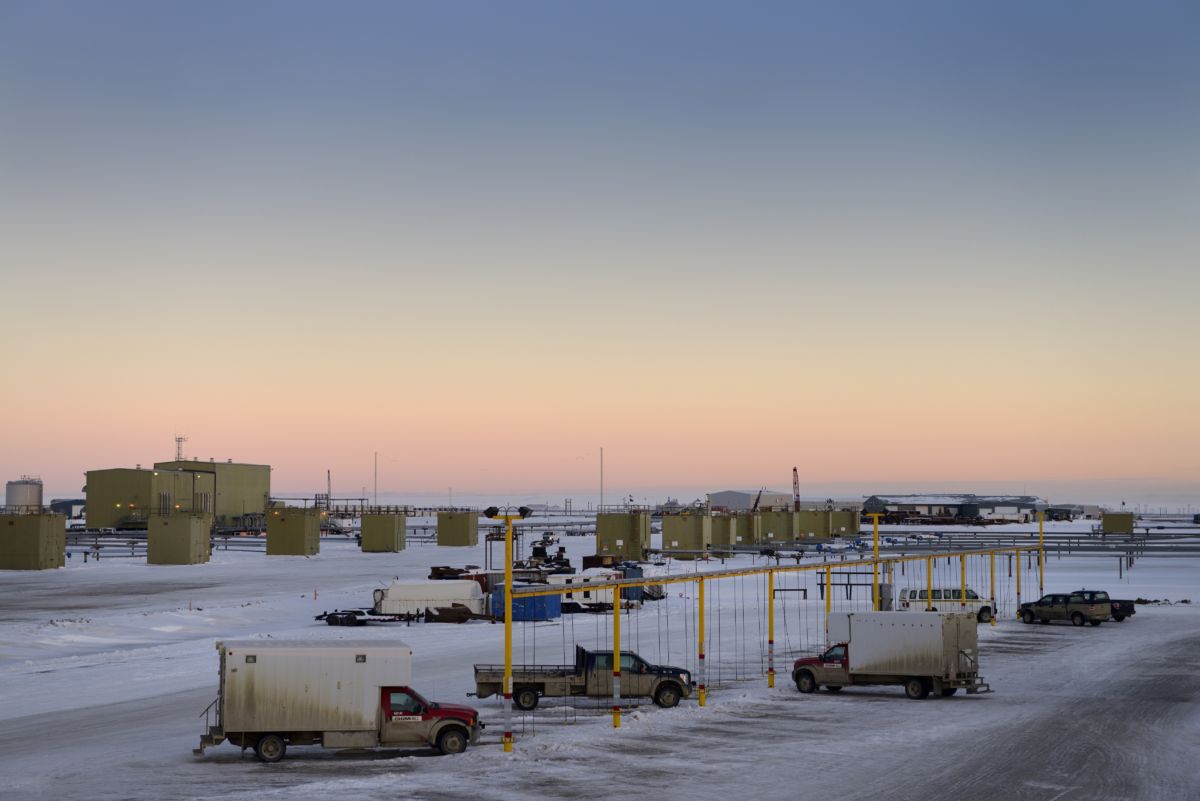The Alaska Supreme Court heard oral arguments on Oct. 9 on the constitutionality of Alaska’s energy policy promoting development of oil and gas. The plaintiffs in Sinnok vs the state of Alaska are 16 young Alaskans ranging in age from 5 to 22.
One of the plaintiffs’ two attorneys, Andrew Welle, told justices the state knowingly and systematically permits, authorizes and promotes the development of fossil fuels. Those actions, he said, are adding to greenhouse gasses and destabilizing the climate system the youth depend upon for life and liberty. The state is damaging, not protecting, a public resource, said Welle.
Later, outside the courtroom, he said the state has known about the dangers and impacts of climate change for decades, yet enacted and implemented a statute that promotes fossil fuels.
Welle said the state’s energy policy violates constitutional rights to due process, public trust, and equal protection. And it is the court’s responsibility to act as a check and balance to the legislative and executive branches on unconstitutional actions, said Welle.
But as Alaska assistant attorney general Anna Jay told justices, the Alaska constitution also states, “It is the policy of the state to encourage the settlement of its land and the development of its resources by making them available for maximum use consistent with the public interest.”
Jay noted that if oil and gas development declined, a person who works in the oil and gas industry could argue their right to a job in their field was violated.
At one point, justice Susan Carney asked, “Is there a time to declare that air that sustains life is a fundamental right?”
Such a declaration is not the job of the courts, Jay said. She said balancing competing interests protected in the constitution is the role of the legislature and executive branches. It’s up to the legislature and executive branch to determine whether to issue regulations, and how stringent to make them, she said. It’s their job to decide the state’s best interests, balancing, for instance, jobs, infrastructure, and public health.
As for a suggested remedy of reducing carbon emissions to zero by a certain date, that kind of determination is also better done by agencies, said Jay. She outlined a lower court’s ruling that said the judiciary doesn’t have the tools to create climate change policy — it cannot commission studies or solicit public input, for instance.
The Alaska Supreme Court will issue its ruling after it reviews the briefs filed and the oral arguments, probably after a period of months.
Youth Describe the Harm of Climate Change Effects to Them, Their Communities
Several of the plaintiffs spoke outside the courthouse after the oral arguments. They described the effects of climate change on their lives.
Esau Sinnok, Inupiaq and age 21, is the lead plaintiff in the case. He’s from Shishmaref, in northwest Alaska. There, sea ice no longer protects the shore from pounding winter storms. The shoreline is also weakened by melting permafrost. The island, which is only a quarter of a mile wide, is quickly losing ground to the sea. As the island shrinks, roads, houses, and other infrastructure are being destroyed by erosion.
The thought of losing your home to rising sea level, storm surges, and flooding is stressful and scary, said Sinnok. “Climate change is not just a political issue to me,” he said. “It’s my lifestyle. It’s what I face every day back at home.” Villagers voted in 2016 to relocate but lack funding.
While attorneys gave oral arguments before the Alaska Supreme Court Wednesday, lead plaintiff Esau Sinnok, Inupaq, age 21, wrote a poem. Sinnok is from the village of Shishmaref in northwest Alaska, which voted in 2016 to relocate. While funding to make the move is scarce, villagers hope to relocate before the village is destroyed by flooding and erosion.
“Why I am Here.”
By Esau Sinnok
The seals, the walrus, the whales, the land, the sea, my home
Millennia of history told and untold
The laughing, the crying, the community is what I am here for.
We protect the animals because they give their lives for us
To continue the lifestyle my ancestors have lived.
I am here today because the seals, walrus, whales, land, sea, my home
Cannot speak English.
Summer Sagoonik, Inupiaq, is 18 years old, and from Unalakleet, also in northwest Alaska. She said they’re having short rainy winters and the rivers don’t freeze over completely. “This made it dangerous to travel by snow machine.”
Hunting for caribou in Unalakleet has become more costly and difficult. Herds that once roamed within a half mile of Unalakleet are now several days travel away.
“I care about my culture, it makes me who I am,” said Sagoonik. “We live off the land. We rely on our plants and animals to survive. Subsistence is my life. I am Inupiaq and I am proud.”
Bernadette Demientieff, Gwich’in Athabascan, is from Fort Yukon, Alaska, in eastern interior Alaska just north of the Arctic Circle. She’s the director of the Gwich’in Steering Committee, a group fighting oil and gas development in the Arctic National Wildlife Refuge.
Children shouldn’t have to worry about the future of the planet, she said.
“I’m ashamed that we are witnessing the state of Alaska being sued by our children. Our state should be leading in climate change discussions,” said Demientieff, “but instead they are actively aggravating the climate crisis with oil and gas development.”
We have 9 days to raise $50,000 — we’re counting on your support!
For those who care about justice, liberation and even the very survival of our species, we must remember our power to take action.
We won’t pretend it’s the only thing you can or should do, but one small step is to pitch in to support Truthout — as one of the last remaining truly independent, nonprofit, reader-funded news platforms, your gift will help keep the facts flowing freely.
